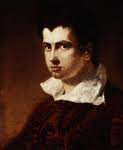PART II
Keeping characters straight through a number of books is hard. But in the end, each story must stand on its own, its hero and heroine bound together by a unique, sigh-worthy, compelling love. Always, there are aspects of personality that make the trail to that happy ending more difficult. For each story, let’s find out which traits advanced and which complicated that journey.
Strengths and flaws of your hero and heroine:
From Louise Allen:
My two heroes are brothers – Marcus (Book 1) and Hal Carlow (Book 7)– and they appear, on the surface, to be very different. Marcus is serious and responsible and very conscious of his duty to the family whereas Hal is a complete rakehell and only serious about his duty as an army officer. But get them together and they both reveal hidden sides to their characters. Marcus is actually as physically courageous and reckless as Hal, whereas Hal, at the first sign of a threat, is as protective of his family as his elder brother.
I did fall for Marcus’s almost constant frown – a deep groove between his brows. His family is enough to make any man frown, and it takes a while for Nell Latham to see that deep groove as a symbol of his caring and not bad temper. As for Hal, I love the fact that under his appearance of hard-bitten soldier and heartless rake he is actually putty in the hands of small children.
Nell Latham, the heroine of the first book, appears supremely competent and has managed to support herself by her skill as a milliner in a very hard world. But I was amused to discover her areas of incompetence – especially her almost lethal approach to firearms.
As for Julia Tresilian, Hal’s heroine, my favourite thing about her is the rebellion that is hidden beneath the well-behaved façade. Julia is all that is dutiful – which is probably why, when she decides to behave completely outrageously, her poor mama hasn’t got a clue what is going on until it is too late to do anything about it.
As for flaws, Marcus has to learn to go with his instincts and his heart and to discover that sometimes trust is more important than doing what is apparently the right thing. Hal has to stop believing in his own image and discover that under the rake who lives for fighting and for pleasure without commitment there is actually a serious and sensitive man who wants to love and be faithful.
Nell’s great flaw – although she would never admit it – is pride. She’ll starve in her garret rather than accept help from a man she sees as an enemy and when her hand is forced she will be reckless rather than ask for help.
Julia suffers from a lack of self-confidence. She believes that she must compromise over marriage and accept any man who will have her. Fortunately Hal manages – unwittingly? – to sabotage every dull and eligible suitor’s courtship. Even then, it takes a lot before she can believe she is loved.
From Christine Merrill:
I just finished reading Louise Allen’s The Lord and the Wayward Lady, and was pleasantly surprised to find my heroine Diana Price ice skating in it. But I could totally believe that she would. Diana is a practical girl who, when she shows up in my book, is given to healthy exercise and walking in the park. She is moderation in all things, until she meets Nathan Wardale.
Nathan’s best quality is probably his steadfast nature. He can survive just about anything that life throws at him in the way of physical hardship, and come away stronger for it. There isn’t really anything that can scare him. The only weakness he has left is for Diana Price.
Considering what happens in the rest of the books, Stephano Beshaley can be a bit hard to love. But when not being an avatar of vengeance, he’s a jewel merchant with a safe full of precious stones and is looking for the right girl to wear them.
My favorite thing about Verity Carlow is probably her sense of adventure. By the time we get to book eight, she’s been sheltered from the action of the whole series. But I kidnap her (twice) and take her to a Gypsy camp and a brothel. I’d hesitate to say she enjoys it, but she proves very resilient.
From Julia Justiss:
For my heroine Lady Honoria, it’s her gritty resilience. With the ruin of her reputation, she’s lost everything a well-bred virgin considered important: her position as the most courted Diamond of the Ton, the admiration and envy of women and the adulation of men, the certainty of making a brilliant marriage that will maintain her position in society. Rather than shut herself away, railing against the unfairness of fate, she takes a hard look at who she is and who she can be, despite her loss of status. She begins to appreciate the considerable resources that remain to her and what she can do with them for the people around her.
Gabe Hawksworth, hellion black sheep and despair of his very proper family, has racketed around life, finding satisfaction only in his army service. Becoming temporary captain of a smuggling vessel for the army friend who saved his life is just the latest in his adventures. Initially, he is only intrigued by–and hopeful of seducing–the mysterious young lady who appears in
For flaws, Honoria has to learn to control the impulsive recklessness that permitted an unscrupulous person to ruin her and figure out how to channel her courage and determination to a higher cause. Gabe has to realize that pledging yourself to one special person is more liberating than adventuring through life without ties or family.
From Gayle Wilson:
I have a history of creating very flawed characters, but Rhys Morgan and Nadya Argentari are, perhaps, exceptions to that rule. Rhys suffers from physical injuries sustained during the Peninsula Campaign, but seems undamaged emotionally by the brutality he witnessed there. His burning desire is to extend his service to his country, a hope that precipitates the journey on which he encounters the beautiful Romany healer. Nadya is a practical and rational woman, a valued member of her family group, secure in her role there and very happy with her life. Their physical attraction takes them by surprise, and both acknowledge the impossibility of any relationship between them. Rhys’s desire to protect Nadya from an unknown enemy, however, forces them into an ever-closer intimacy. The flaw that leads to the climax of the novel is not found in these characters, but rather in the prejudices of the societies in which they live, prejudices they must overcome to find a lasting happiness.
From Annie Burrows:
I got a real buzz when my editor admitted she was just a little bit in love with Monty. And Louise Allen’s comment, after reading my story (which she got in a special offer bundle from Mills & Boon) that she thought Midge was an original absolutely made my day.
Greatest flaws – ok, both my main characters have plenty. Midge has no confidence in herself as a woman. In fact, because of her mother’s obsession with her sons, she finds it hard to believe in her worth as a person at all.
And as for Monty – well, his own childhood was not much better than Midge’s. He has experienced deep hurts and rejections, which have left him determined never to appear as though he needs anyone. Least of all a woman.
So neither is quite sure what to make of it when they can’t keep their hands off each other. It would not take much for them to make a complete hash of their relationship.
Which is just the point where Stephano steps in…
From Margaret McPhee:
Thief-taker Will Wolversley, or Wolf, as he is known, is definitely a man I would fall for, but then I’ve always had a soft spot for bad boys and outsiders.
What I like best about Wolf is that as mean, moody and dangerous as he is to the world at large, when it comes to the woman he loves it’s a completely different story.
As for my heroine, lady’s companion Miss Rosalind Meadowfield, what I like about her is her warm heart, her gentleness and, most of all, her ability to see through Wolf’s tough exterior.
Their greatest flaws? Wolf’s prejudice against the aristocracy, the gentry and women like Rosalind Meadowfield.
And Rosalind’s determination to run away from the sensual attraction that exists between her and the big bad thief-taker.









